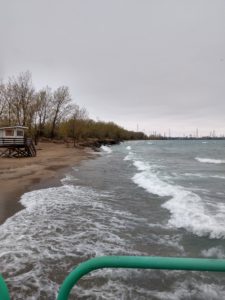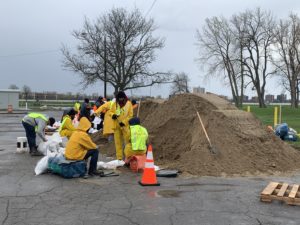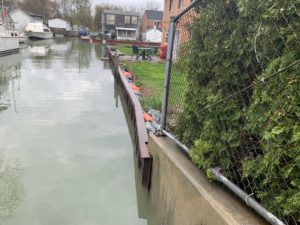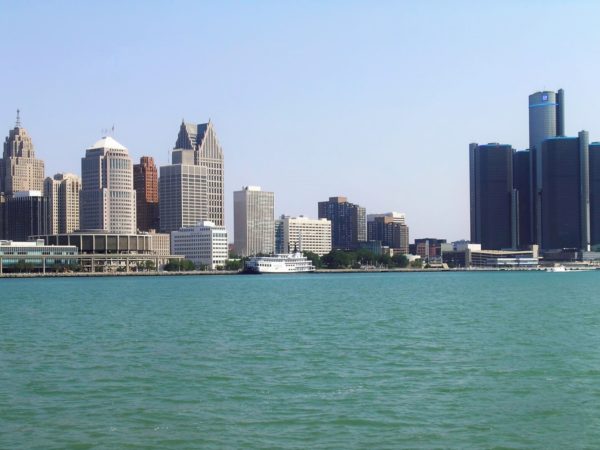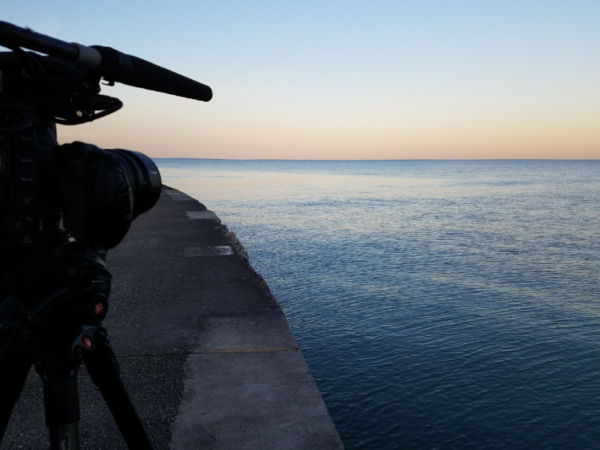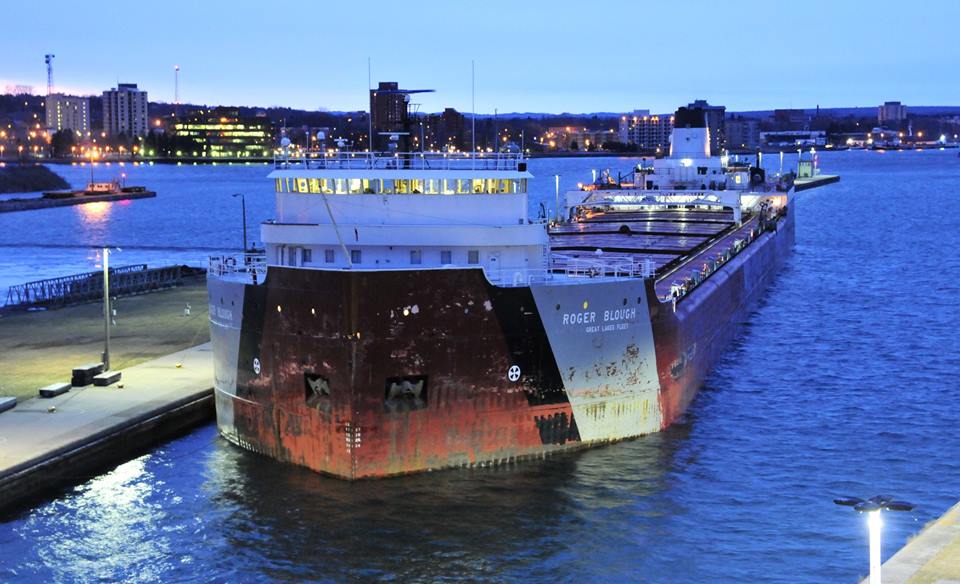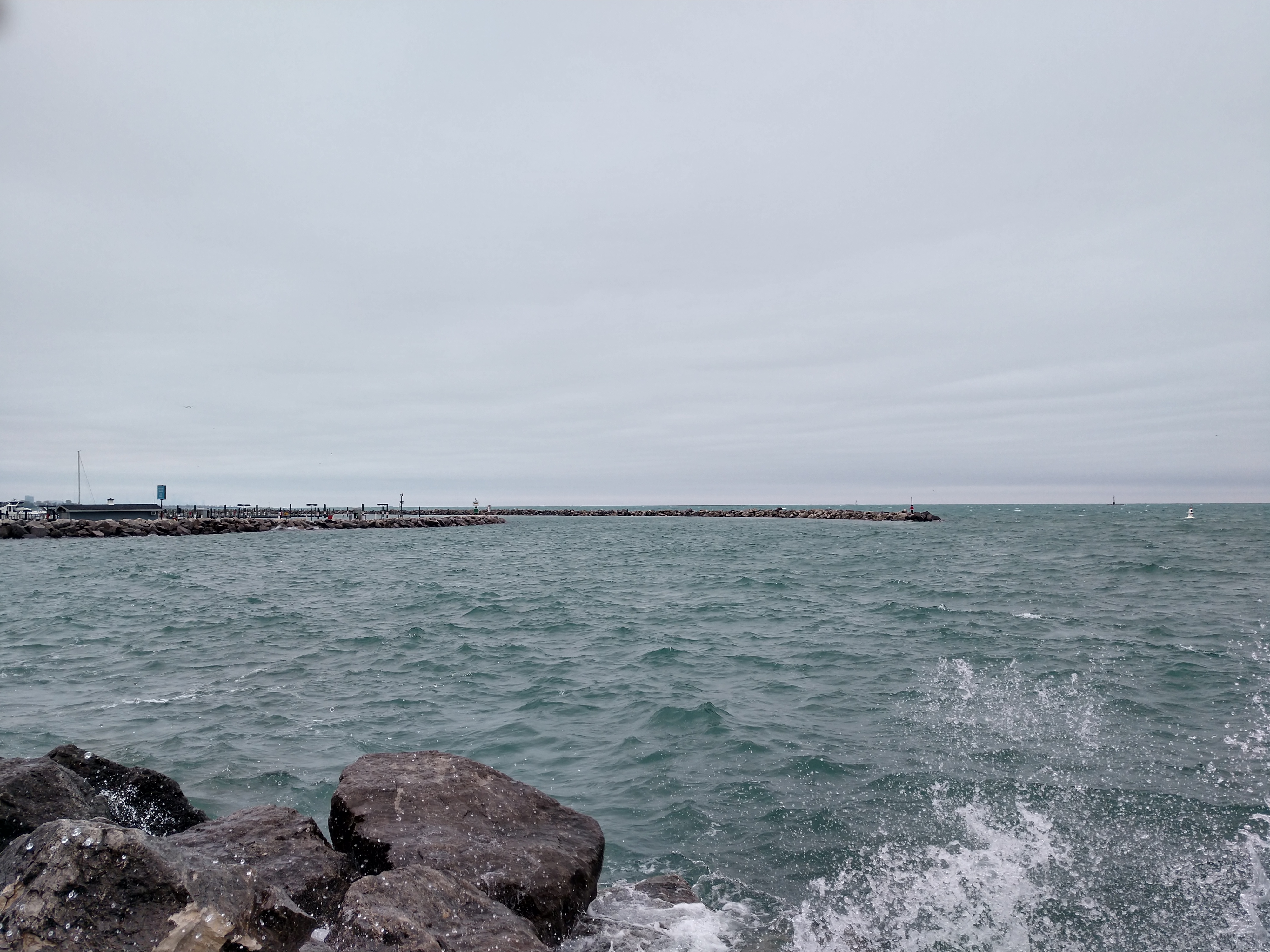
The past week has not been easy for Hammond Marina in Indiana with rains and the high water levels in the Great Lakes. “April has been one awful month, and May is starting out to be equally pretty nasty,” said Harbormaster Keith Carey.
He’s had to deal with minor problems on the dock with framing and plumbing, and at least five of the anchor chains holding the marina’s floating docks snapped. At one point the water rose high enough to submerge the marina’s launch ramp, though that is no longer an issue. “There’s a happy medium, and we’re a little too high right now,” Carey said.
When it comes to marinas, it’s better to have higher water levels than lower water levels, according to Chester Kolascz, owner of the Port Sanilac Marina in Michigan’s Thumb region.
“I’d say generally speaking, most marinas would prefer to have the higher water levels,” Kolascz said. “It eliminates the need for dredging.”
But maybe not this high.
On May 3, Lake Superior was 8 inches above its average level on that same date in 2018 and Lakes Michigan and Huron were 9 inches, according to the U.S. Army Corps of Engineers weekly water level update. Lakes St. Clair, Erie, and Ontario were 11, 7, and 10 inches respectively above their May 3, 2018, level.
Port Sanilac Marina has fixed docks, which are high enough to deal with the current water levels, and it has adjustable finger piers. The marina opened in 1977. Some of its walkways were barely high enough in the 1980s, when the Great Lakes last reached record high water levels.
“‘86 was a record year, and ever since that time it sort of started going down,” Kolascz said. “I’d say somewhere between ‘86 and ‘90 we were experiencing these kinds of water levels.”
“I’m keeping my fingers crossed that we won’t see above record levels,” he added.
Trouble for cities near the water
In Quebec, threat became reality after a dike breach near Montreal on April 27 led to massive flooding. By the next day, 6,424 homes were flooded and 9,522 people had left for higher ground, the Globe and Mail reported.
Detroit has been dealing with the consequences of rising water levels as well. Water from Lake St. Clair and the Detroit River breached seawalls in several residential areas last week.
The City of Detroit put out a call for volunteers to help fill sandbags and build barrier walls to prevent further damage. According to the city’s website, more than 320 people volunteered and, with city employees filled around 18,000 sandbags in a few days.
The City of Detroit did not respond to requests for comment.
Gulari was one of the residents in the impacted area. His house is on Harbor Island Street, but he’s one of the more fortunate ones because his house isn’t flooded and the street directly in front of his house is still clear.
“There are a lot of houses we almost have to sandbag around them,” Gulari said. “They could almost be a full write off.” Gulari, an Olympic sailor, has had his house for about 12 years, but neighbors who have been in the neighborhood longer told him the last time the flooding was this serious was about 20 years ago.
He’s been trying to replace his seawall for a few months already, but the soonest he can get a contractor is about two months away. “But that’s two months from now, and I believe the water will continue to rise, so it’s nerve-wracking,” Gulari said.
But despite how nerve-wracking owning a house by the river can be, Gulari does not regret buying his house. “I love the place,” he said. “It’s a very unique spot in Detroit, and my whole life revolves around the water, and I would not live anywhere else.”
Water levels: what’s next?
There are three main factors impacting water levels. Runoff and rainfall raise water levels, while evaporation lowers water level. When there’s too much of the first two and not enough of the third, flooding happens.
“It’s been a very wet winter and a very wet past several years, and sometimes that’s more than the system can handle,” said Andrew Gronewold, an associate professor at the University of Michigan who researches hydrology.
He spent nearly a decade working in the NOAA Great Lakes Environmental Research Laboratory studying Great Lakes water levels.
“There are limits to any system,” he said. “There are natural limits to any managed system, and there’s an awful lot of water coming out of the Great Lakes, and there may be incidents when capacity is exceeded.”
High water levels can have its positives, like increasing navigability, Gronewold said. But high waters can affect the accessibility of piers and docks, bring additional debris, shrink the total area of beaches and larger ships have to be careful not to go too fast and create waves that spill out over channels, causing damage.
The Great Lakes Environmental Research Laboratory has a water level dashboard that keeps a record of decades of Great Lakes water levels and forecasts future water levels.
The current 6-month forecast predicts a range of possible water levels that could surpass record highs. But that forecast isn’t a given.
“It can also hit the lower end of the prediction, in which case it’ll be somewhere between average and record highs,” Gronewold said. Making water level predictions more than 6 months out is hard, Gronewold said.
“The question then becomes, in the spring, are water levels going to rise more than they usually do or less than the usually do,” he said. “Right now it looks like water levels will rise more than they usually do, and it’s already pretty high.”


